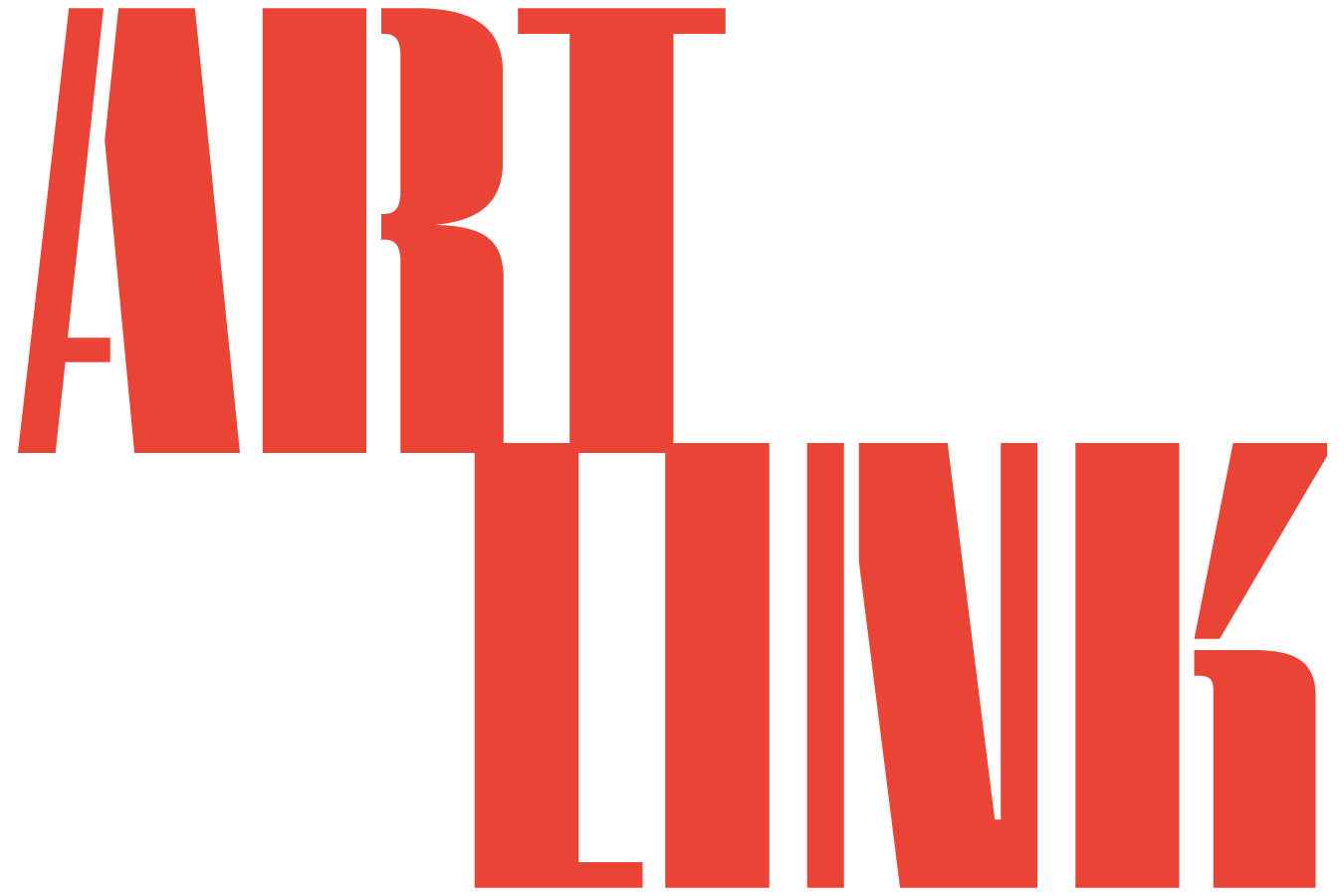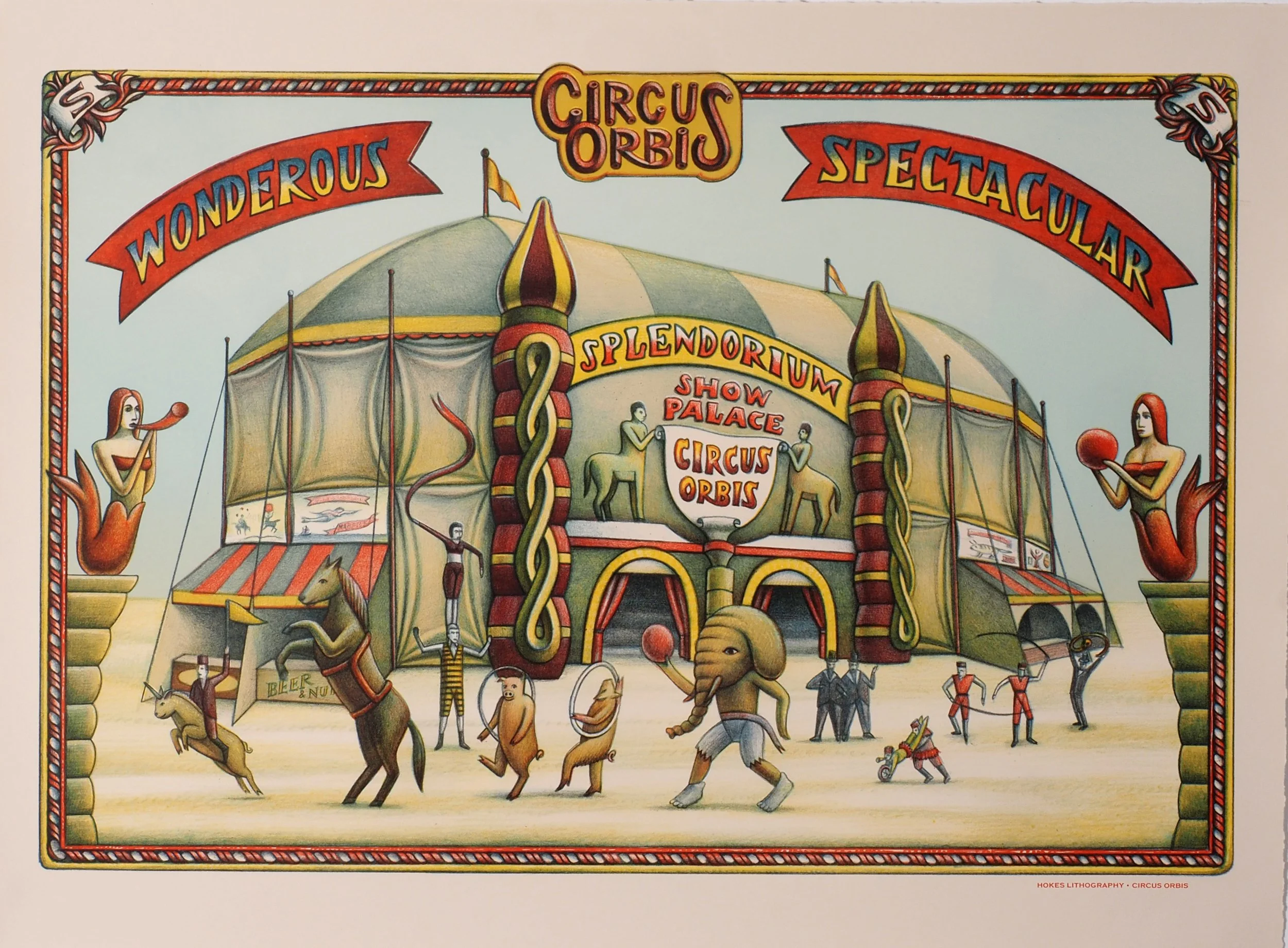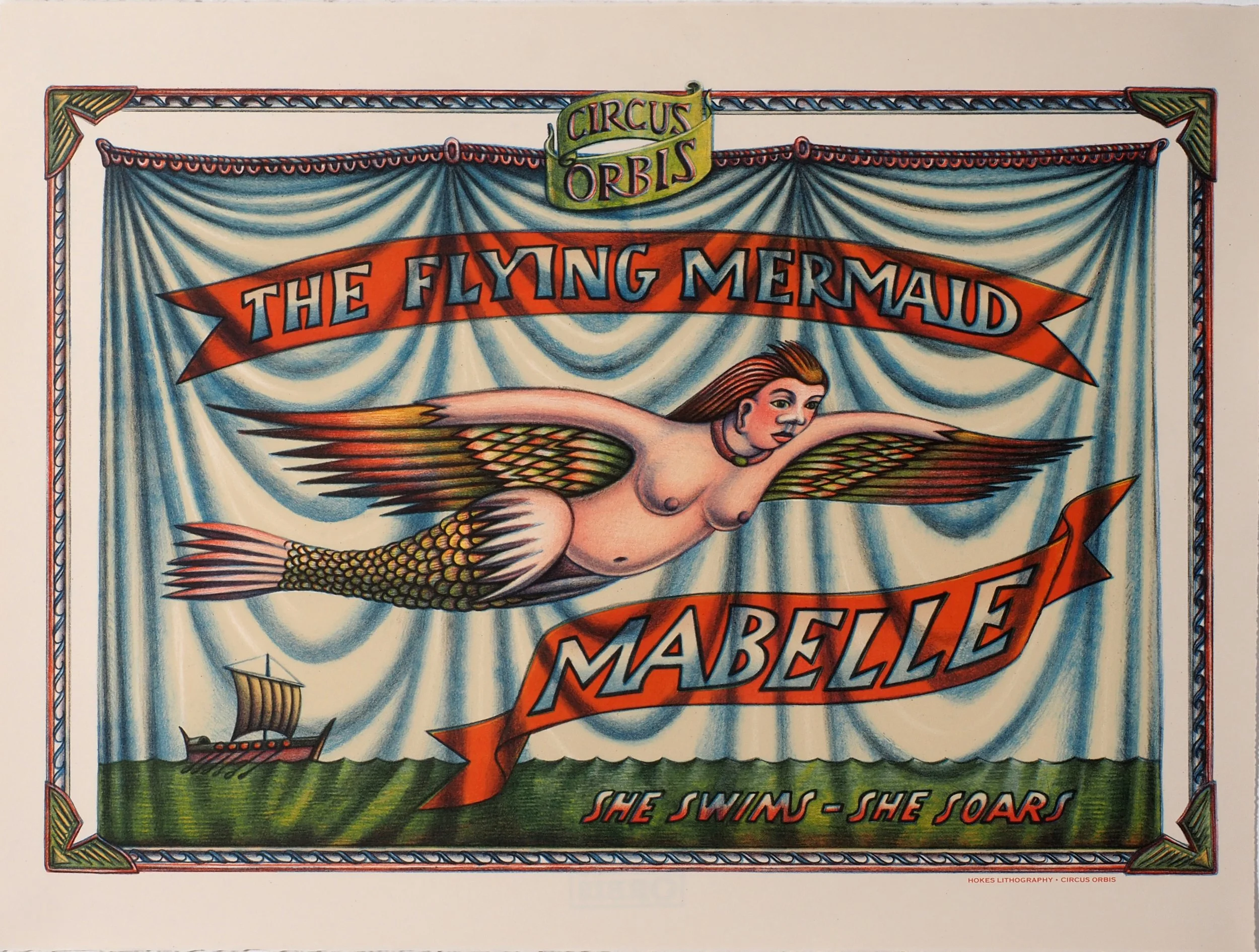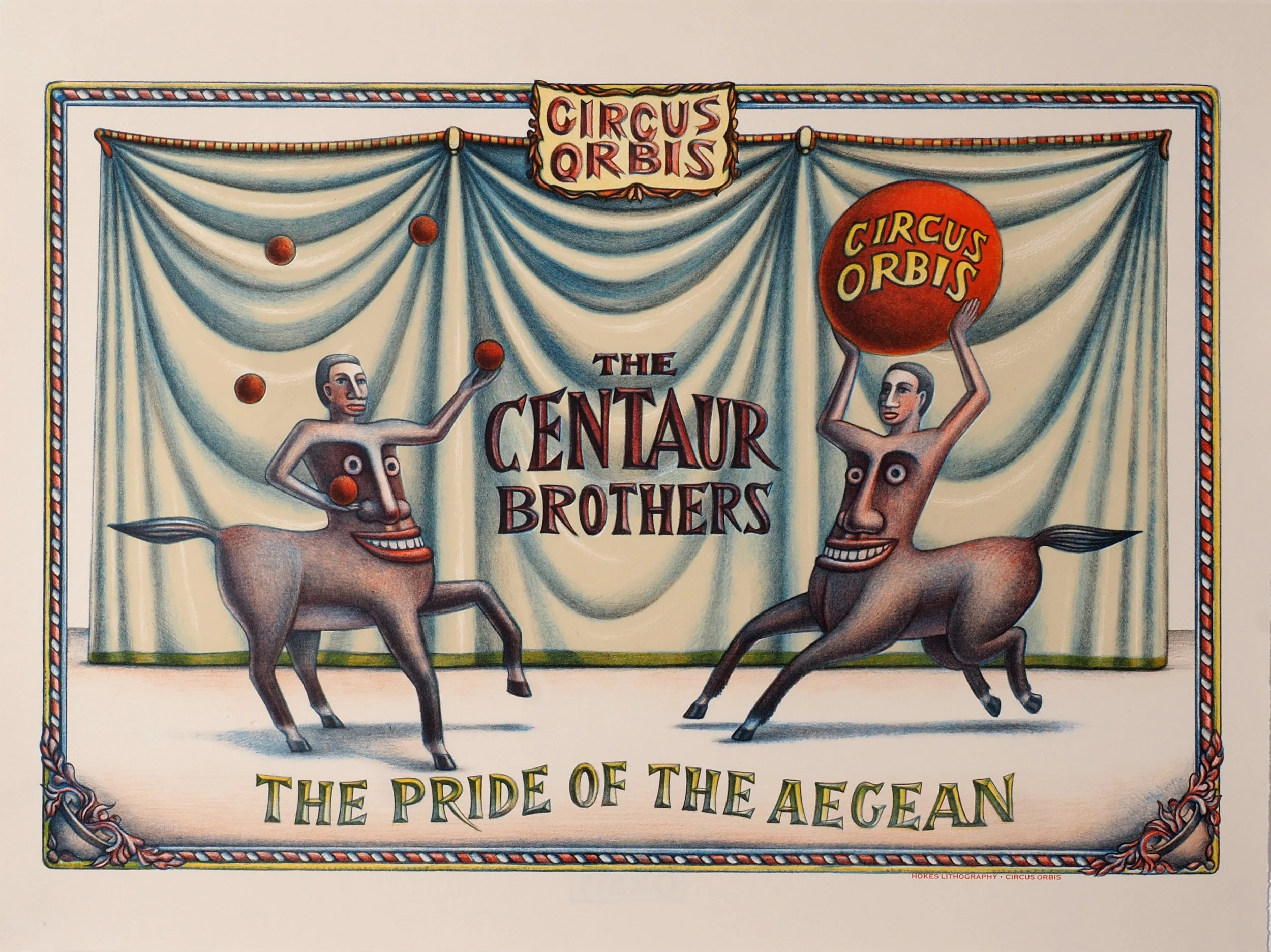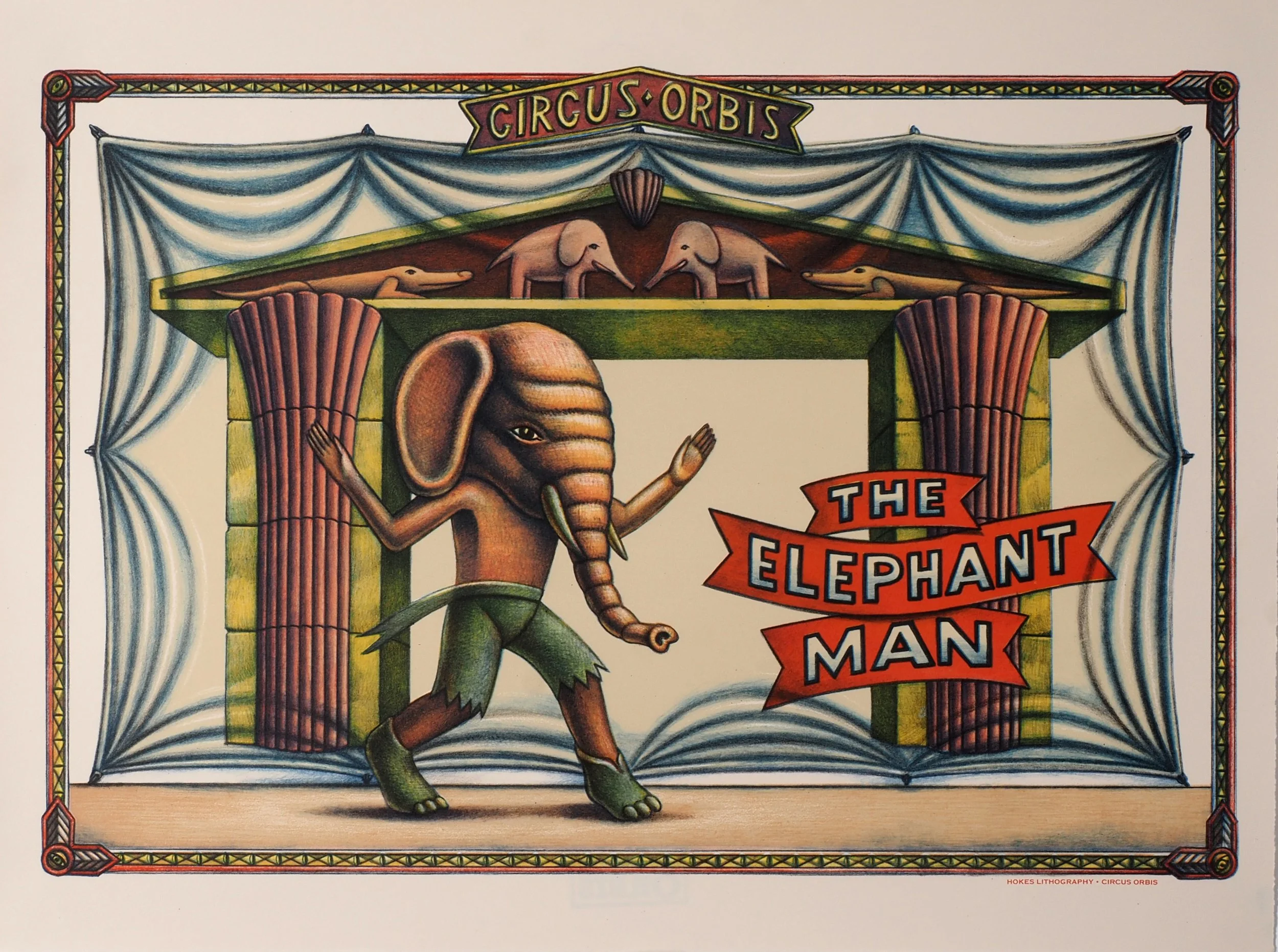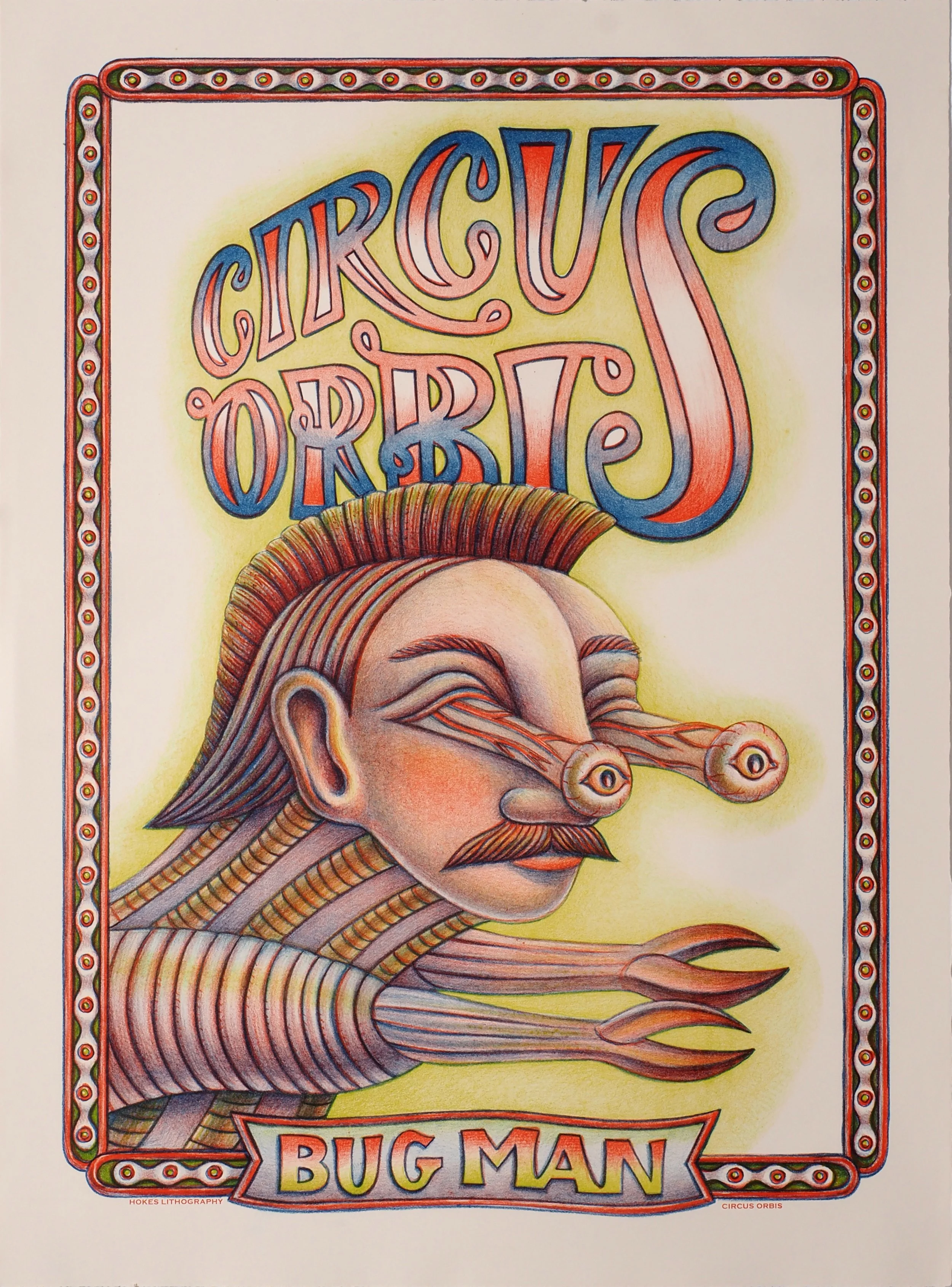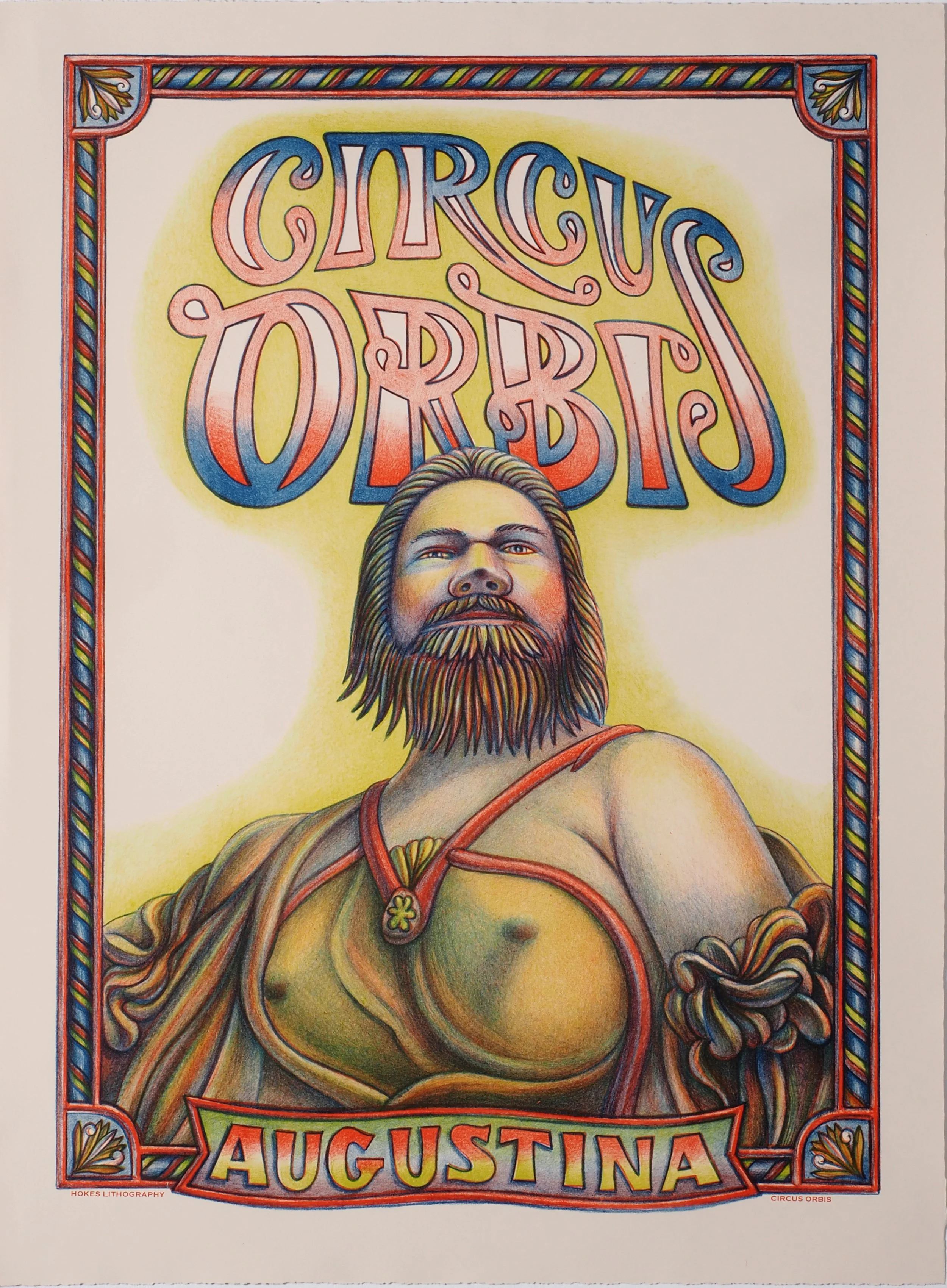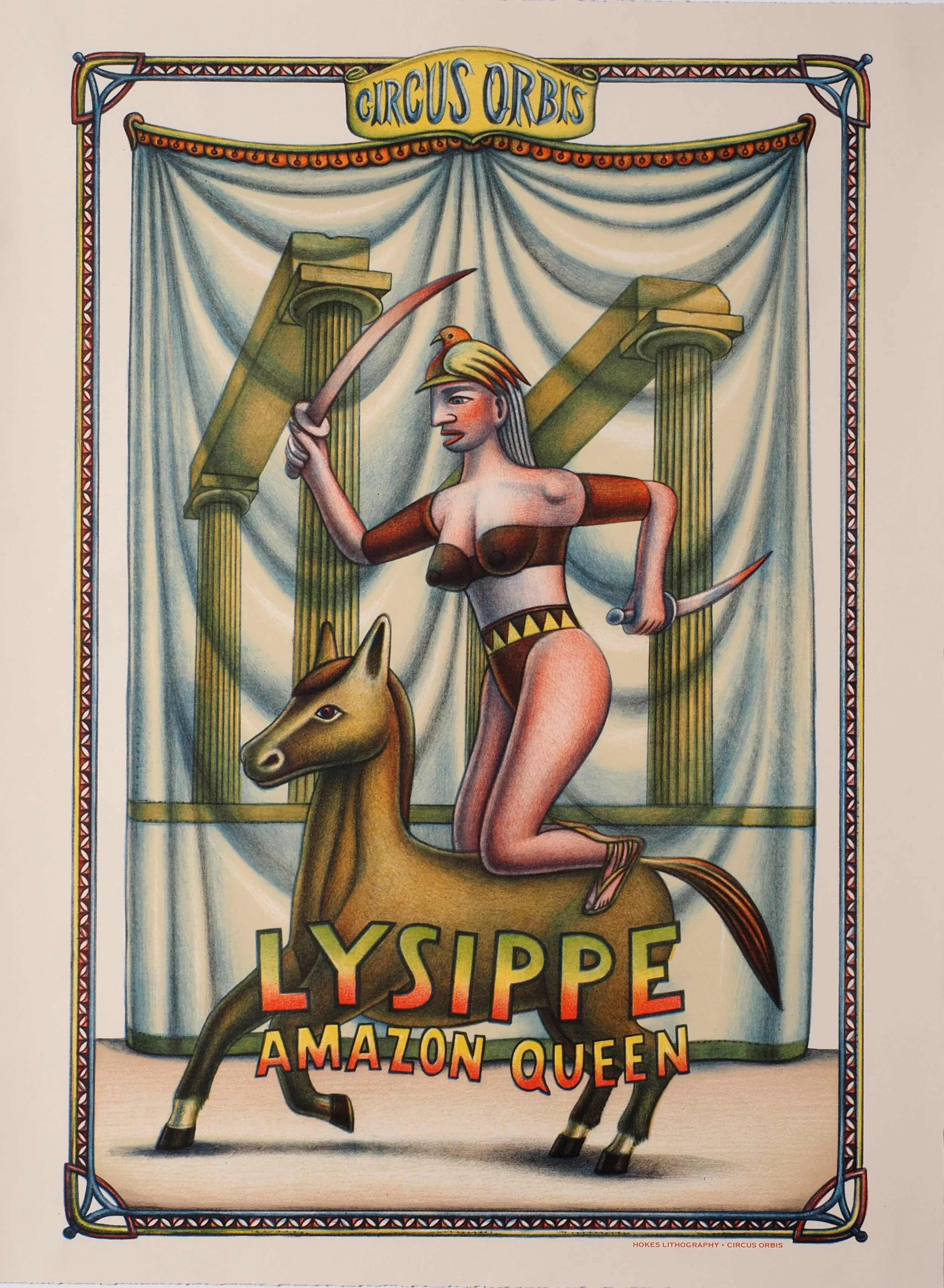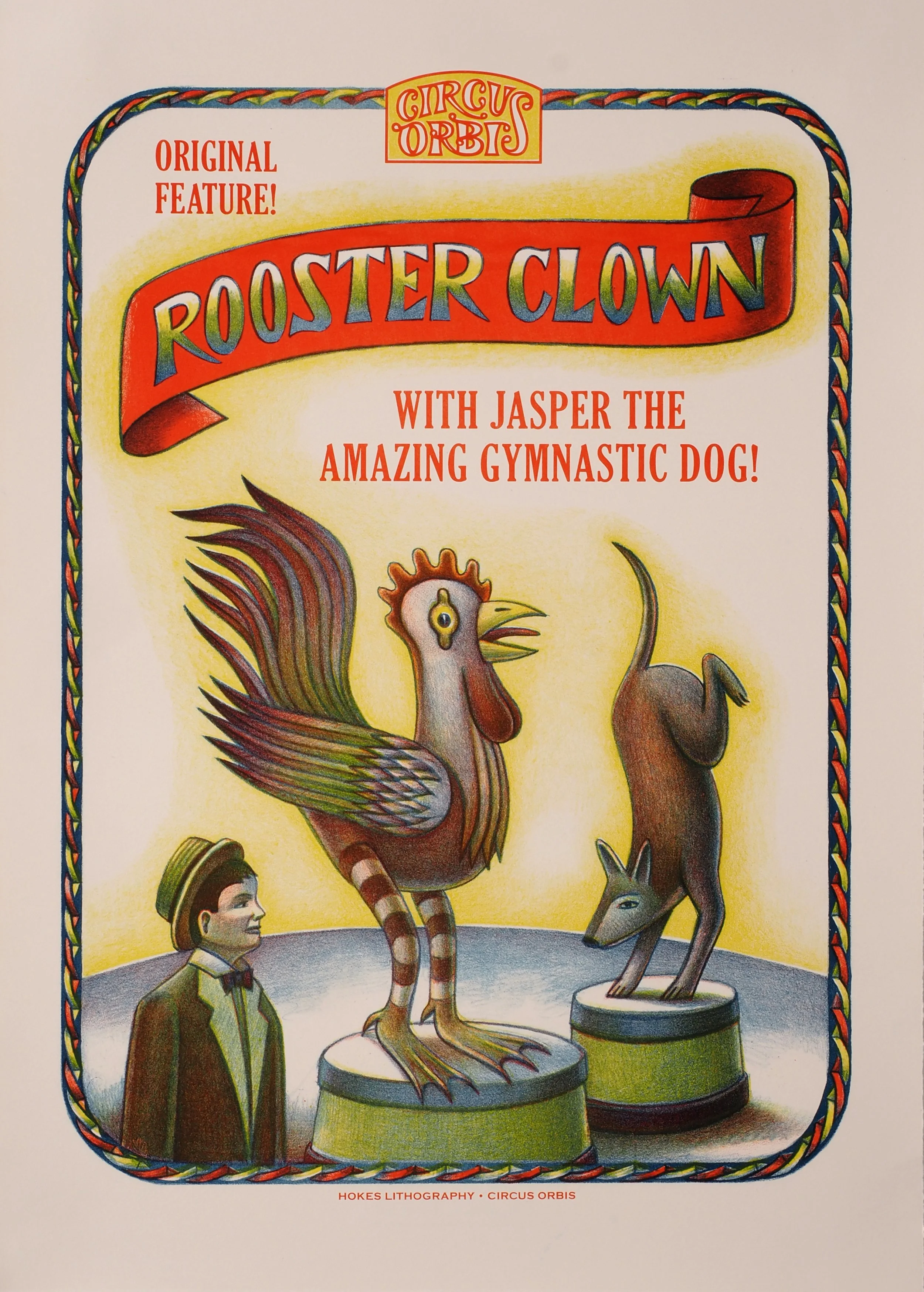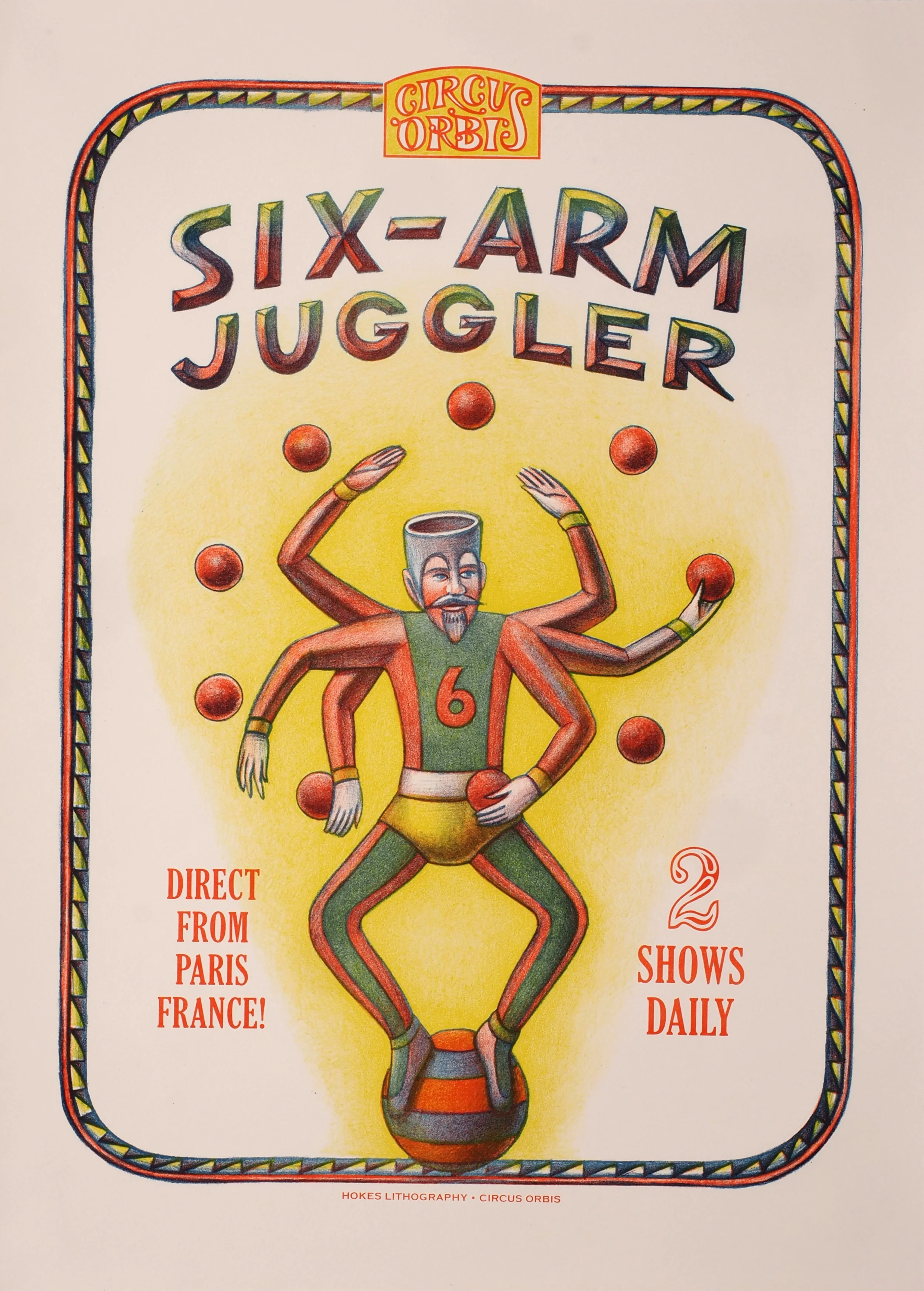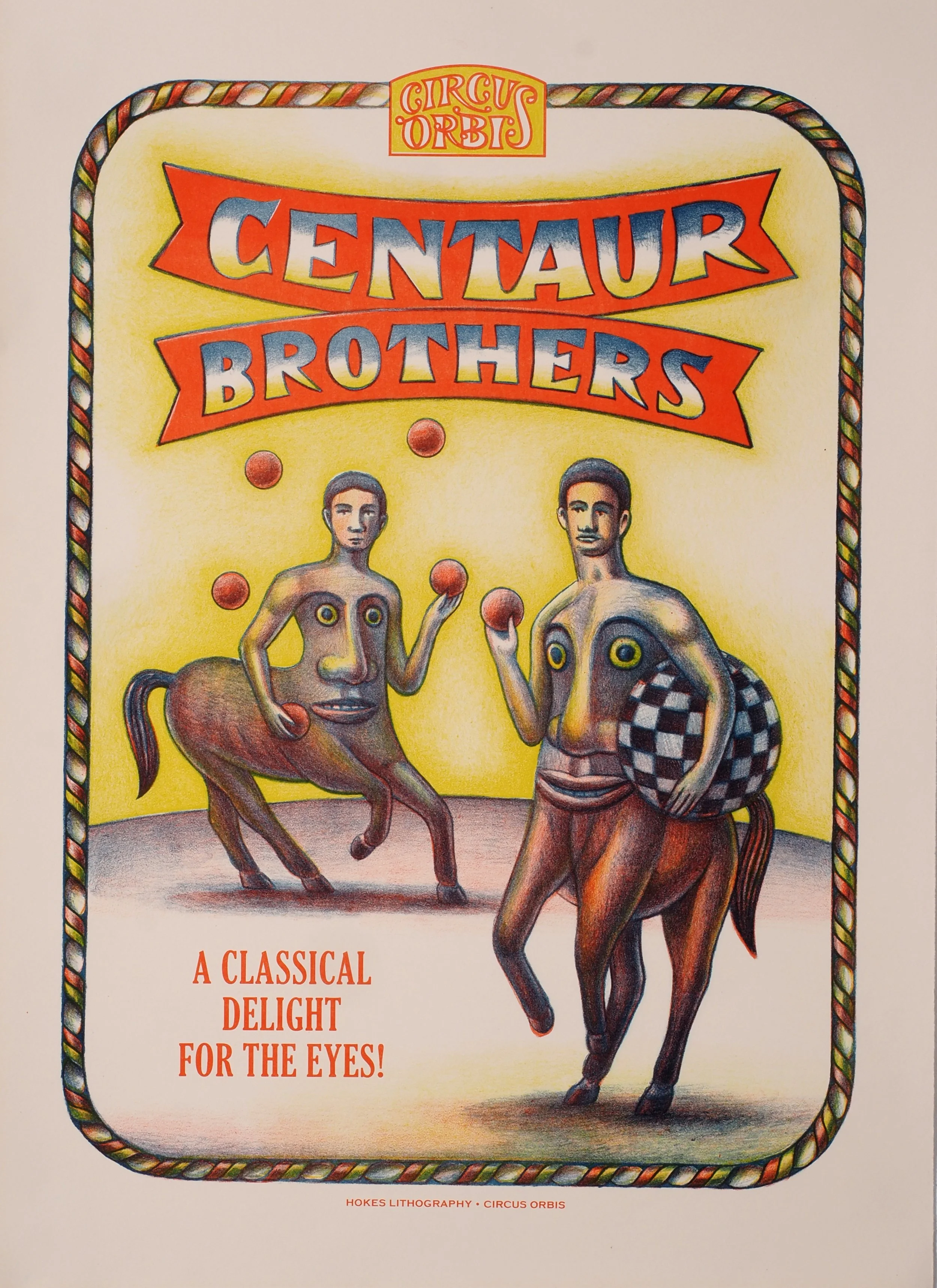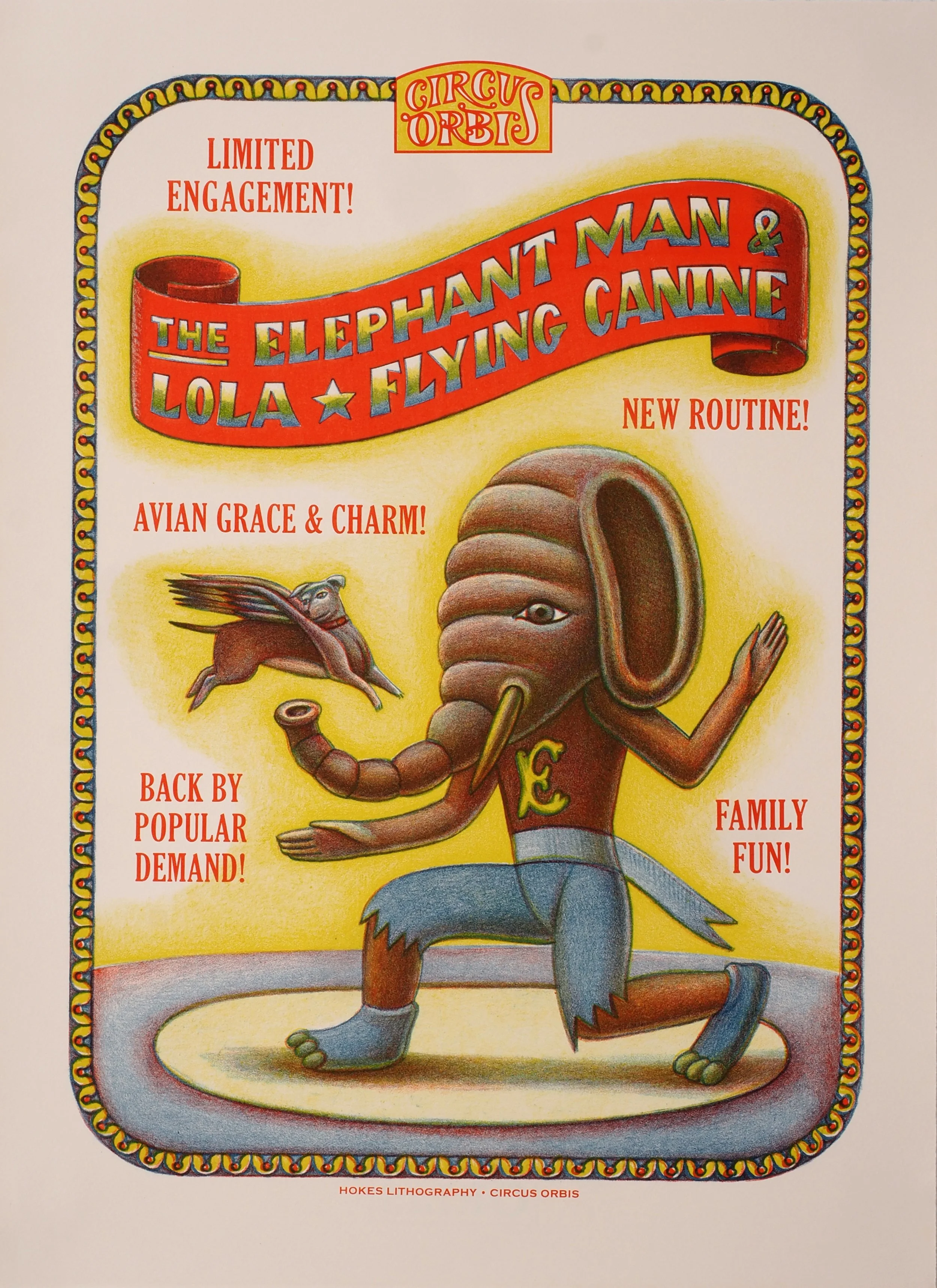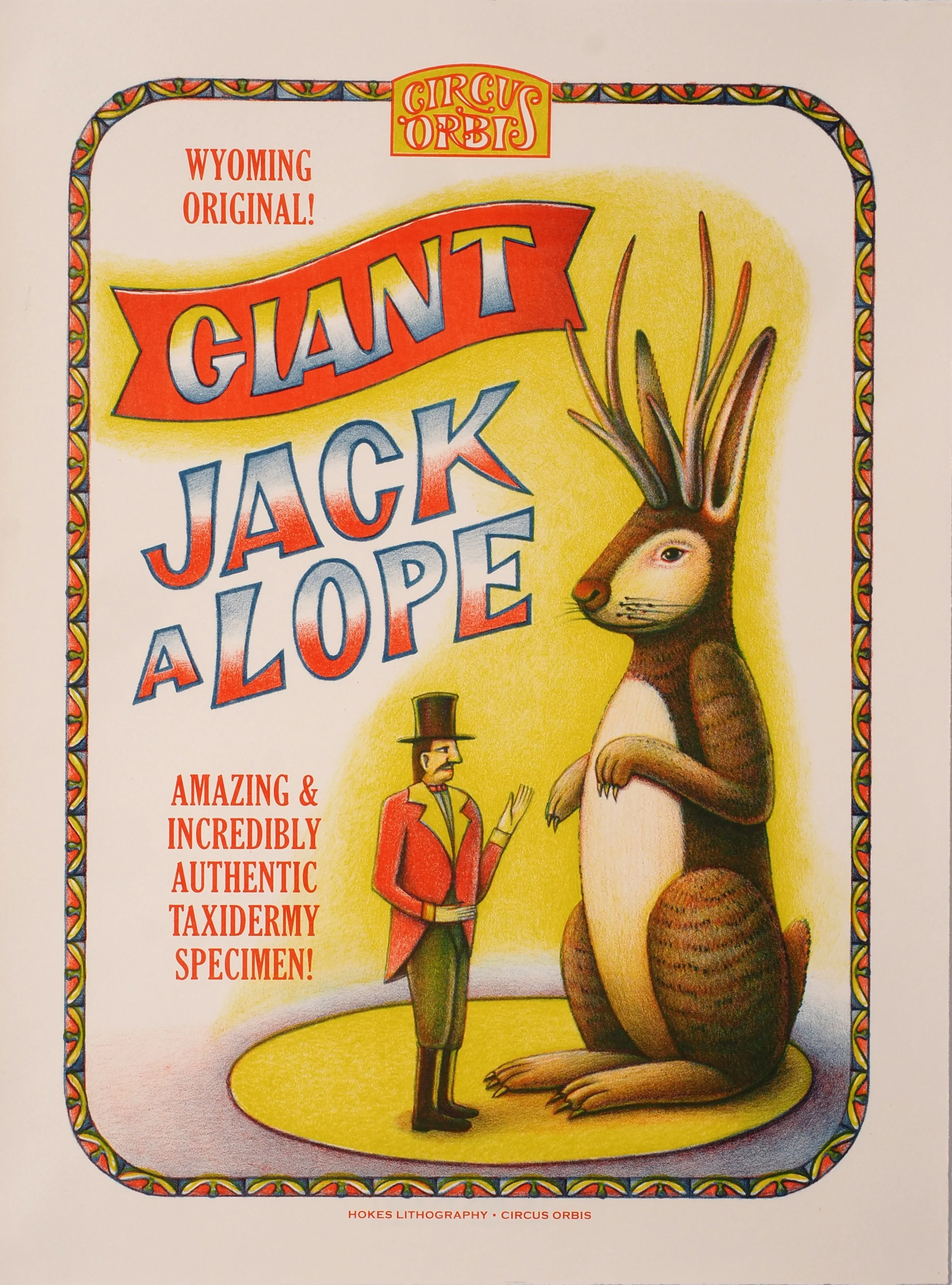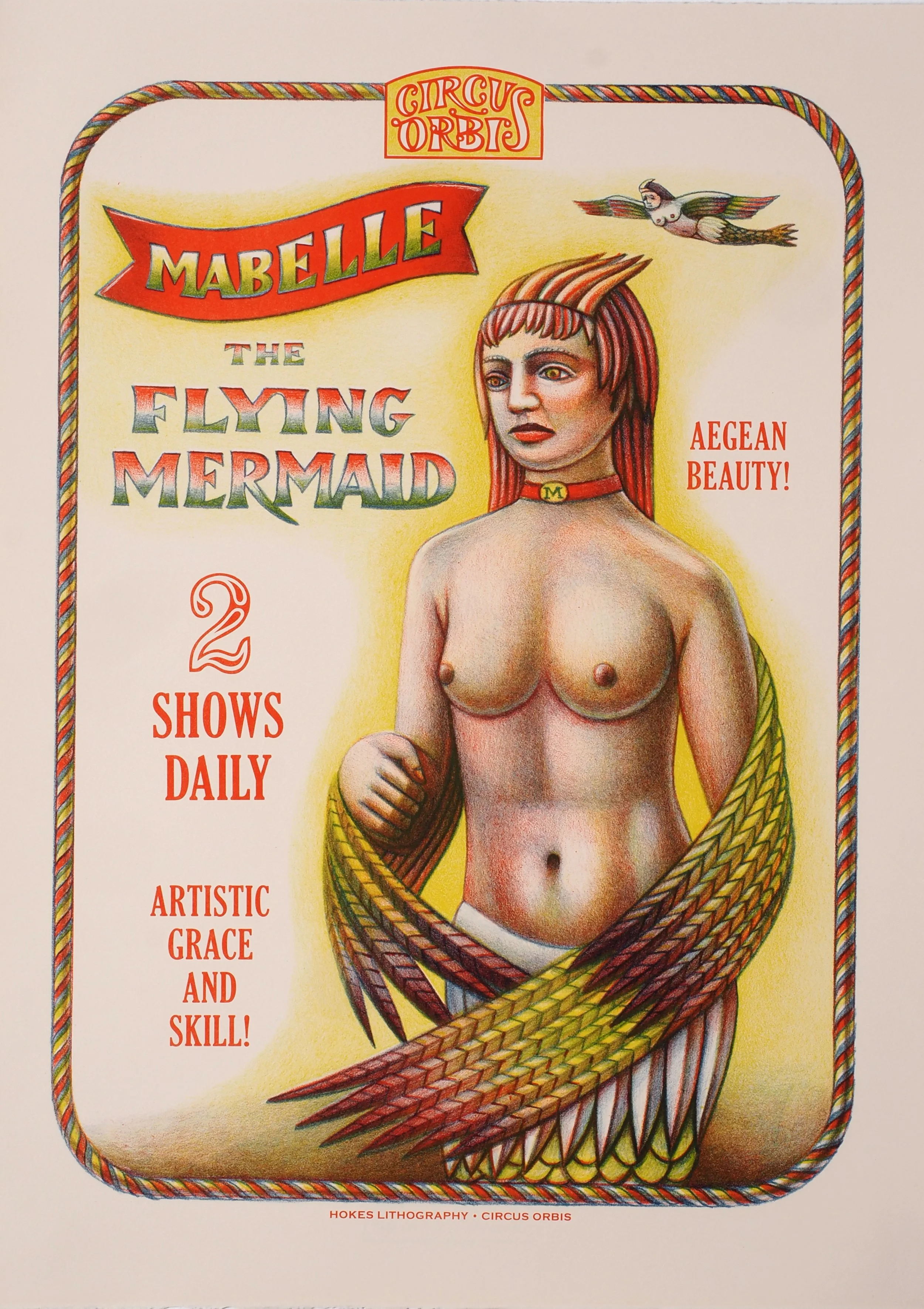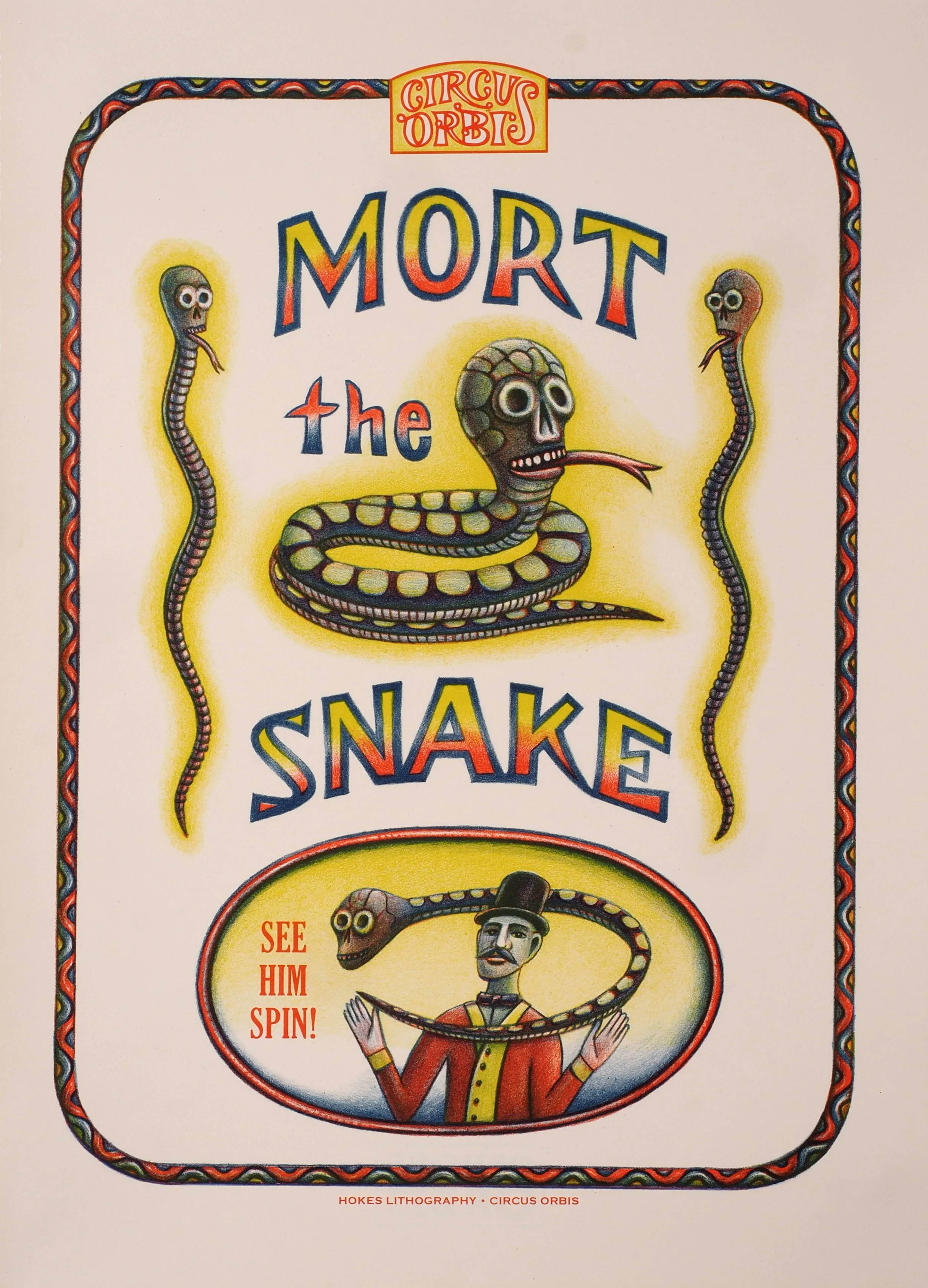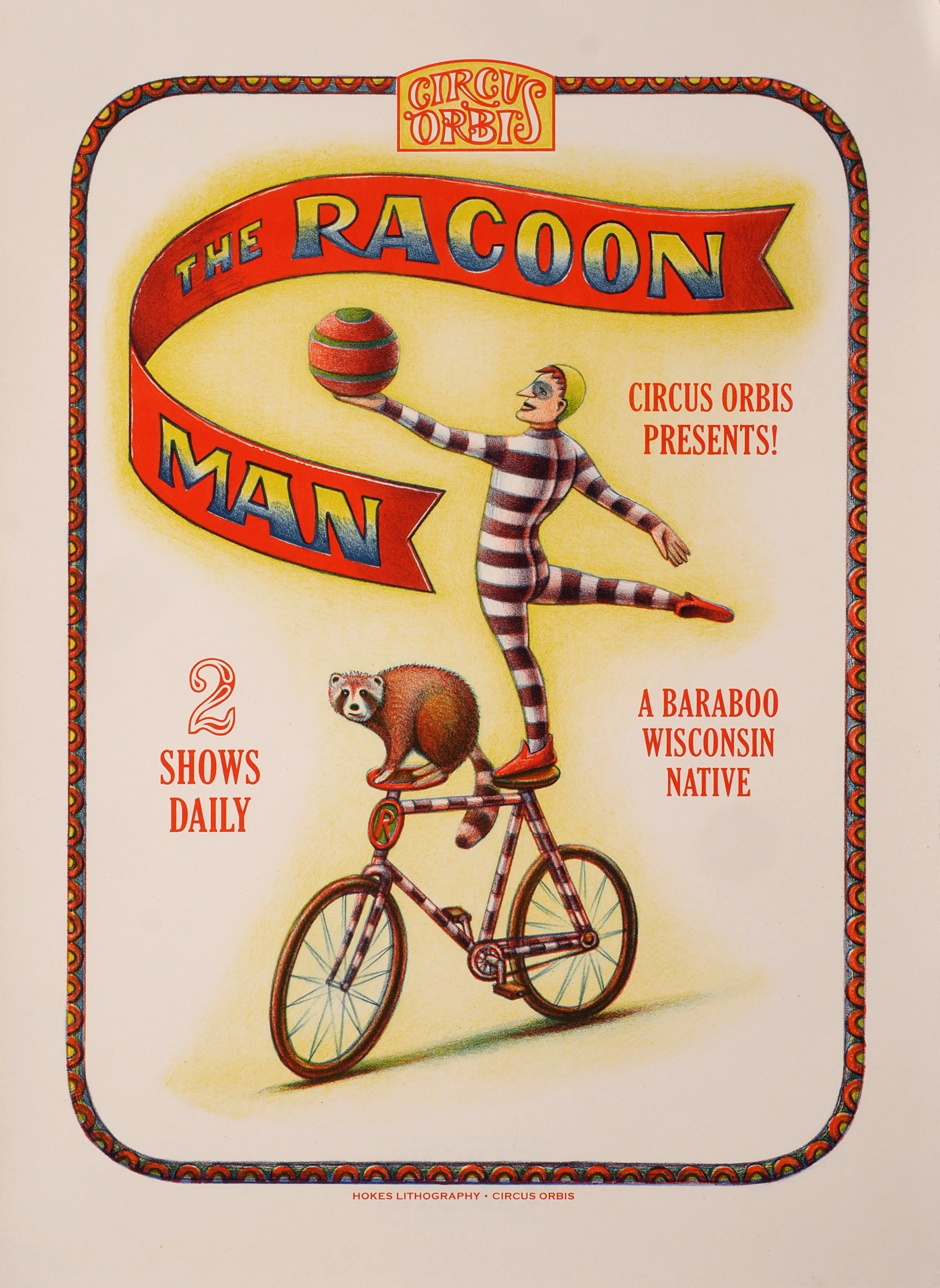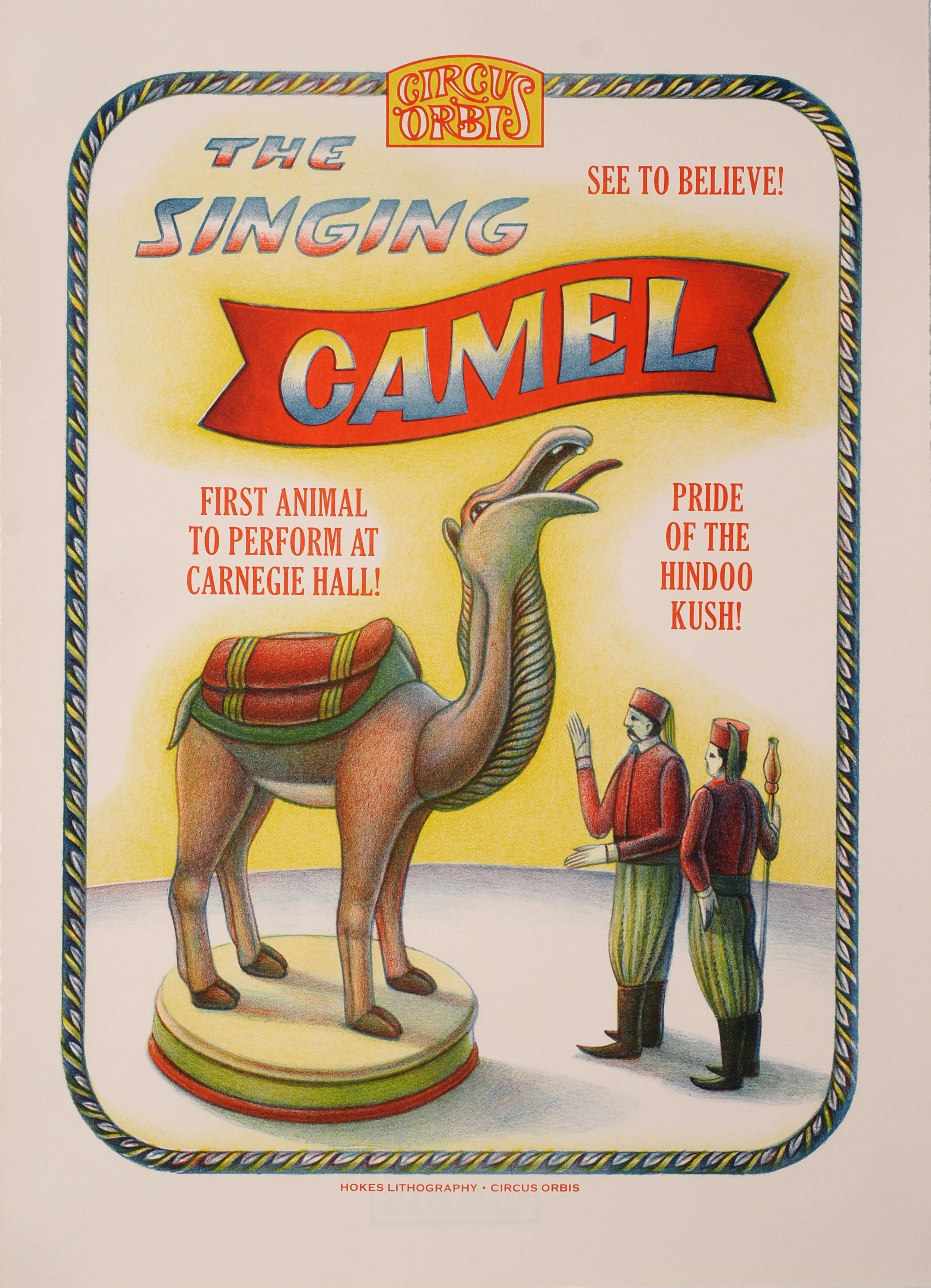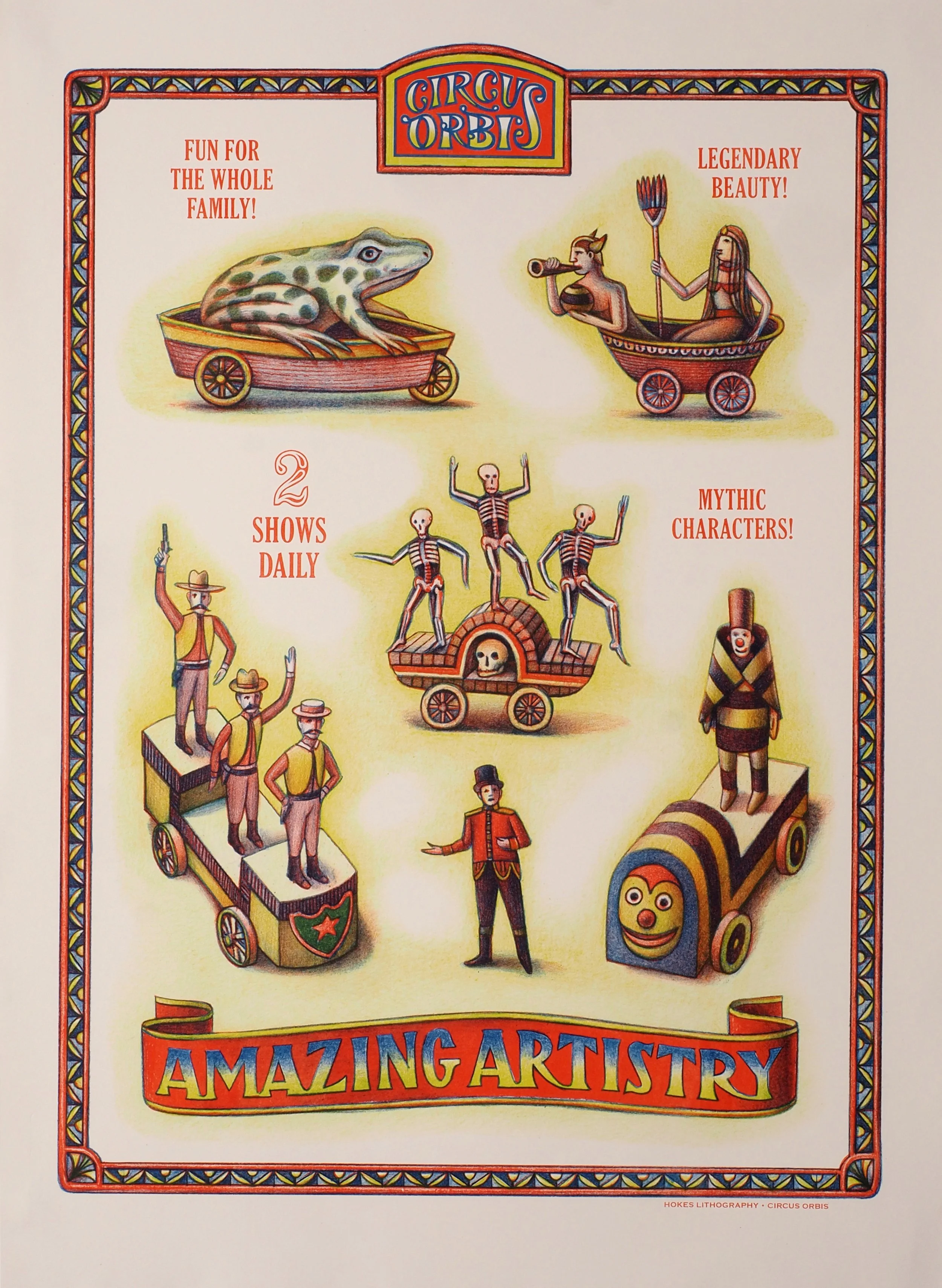Circus Orbis
Beavais Lyons
September 4 - 28, 2025
Artist Statement
For the past four decades my studio work has explored various forms of mock-documentation, fabricating and documenting imaginary worlds. My fictive subjects have included archaeology, folk art, medicine, zoology and always include various forms of biography. Prints are central to much of my work, as printed culture is central to science and history. In using historical methods, I regard printmaking as a medium that gives the contemporary artist an opportunity to time travel. My most recent project, Circus Orbis includes prints and other artifacts from a hypothetical early 20th century American circus founded by Thaddeus Evergood from Jacksboro,Tennessee. The project includes prints, printed ephemera, hand-painted banners and other artifacts providing a tangible, visual record of this work of fiction. This lithograph is one specimen of print culture that is part of this larger project.
Circus Orbis:
Circus Orbis was a regional circus based in Jacksboro, Tennessee, that performed in the American South and Midwest in the early 20th century. Unlike the better-known circuses of the day, Circus Orbis toured in only ten train cars, had thirty performers, and a small menagerie consisting of domestic animals and costumed performers dressed as various anthropomorphic creatures. The founder of the circus, Thaddeus Evergood spent a year in Rome in 1908 where he was a street performer and found inspiration from the city’s art and architecture. The design of Circus Orbis was informed by ancient Roman and Baroque art, as well as trompe l’oeil frescos from the Villa Farnesina.
This exhibition presents a selection of graphic works used to promote the circus, some surviving printed ephemera, as well as a facsimile of one of the sideshow banners. Some of the larger prints have six-color runs, though the small “souvenir prints,” which were sold following performances, use a three-color palette based on the street posters of the Jules Chéret. The Circus Orbis lithographs were designed and printed by the London publisher Everitt Ormsby Hokes, who had a reputation for academic and scholarly publications in the fields of archaeology, medicine and natural history. Printing commercial work allowed Hokes to underwrite his scholarly publications.
The circus was a significant cultural form in America during the era before the rise of movie theatres. It is especially interesting for its connections to the history of theatre, cultural anthropology, animal studies, typographic design, and the popular arts. Circus Orbis featured several female performers, including Augustina “The Bearded Lady,” and Lysippe, “The Amazon Queen,” both of whom challenged common depictions of women of the period.
In 1928, two weeks before the end of their tour, Mabelle Stewart, “The Flying Mermaid,” who was a featured performer, died as a result of a fall when the rigging suspending her collapsed. Heartbroken, Evergood cancelled the rest of the tour. The following year, Circus Orbis gave its final performance on Friday July 26, 1929 when the “Splendorium,” the Circus Orbis “Show Palace” was destroyed in a fire following a performance in Paducah, Kentucky. Fortunately, no one perished. With the crash of the stock market three months later, Evergood could not find investors to help him rebuild the circus. Despite the start of the Great Depression, in 1930 several of the performers found work with Ringling Brothers and Barnum & Bailey Circus. One of the best accounts of Circus Orbis may be found in Thaddeus Evergood’s his memoir Popcorn & Peanuts published in 1933.
About the Artist
Beauvais Lyons is a Chancellor’s Professor at the University of Tennessee in Knoxville where he has taught printmaking since 1985. Lyons received his MFA degree from Arizona StateUniversity in 1983 and his BFA degree from the University of Wisconsin-Madison in 1980. See his web site (volweb.utk.edu/~blyons) for information on his fictive projects through the Hokes Archives. Lyons’ one-person exhibitions have been presented at over 80 museums and galleries in the United States and abroad. His prints are in numerous public collections including the Smithsonian Museum of American Art, Washington, DC; The Whitney Museum of American Art, New York, NY; and the Philadelphia Museum of Art, Philadelphia. PA. In 2002 he received a Fulbright Fellowship to teach at the Fine Arts Academy in Poznañ, Poland. In 2014 he received the Santo Foundation Artist Award, and in 2017 he received the SECAC Excellence in Teaching Award.
